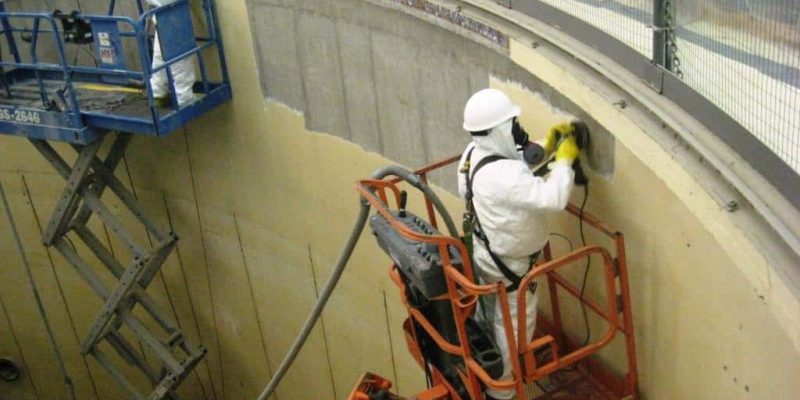Concrete shaving is a process which quickly and efficiently removes the surface of contaminated floors, ceilings and walls by shaving off layers to a pre-determined depth leaving a polished surface. Separation of the contaminated surface from the bulk of the concrete significantly reduces the volume of material required to be treated as waste, as the remaining bulk then can be considered contamination free and removed using conventional methods.
What is Concrete Shaving?
Concrete Shaving vs. Scabbling
Decommissioning contractors prefer concrete shaving over concrete scabbling as a superior method. Scabbling is the method of removing the top layers of contaminated concrete with a chipping and hammering machine. One problem with the scabbling systems is more material than necessary must be removed to eliminate the possibility of high spots (i.e. protruding aggregate) thus producing several times more secondary waste than necessary which then must be contained at source and later stored. Another problem with the scabbling method is the quantity of dust produced which must also be controlled and contained.
The Marcrist Concrete Shaver
Concrete Floor Shaver: Bluegrass uses the Marcrist Concrete Shaver for use on contaminated concrete slab. The heart of the system is Marcrists uniquely designed, and patented, interlocking surface shaving diamond blades. This system enables the blades to produce a completely smooth surface that is easily surveyed.
Bluegrass concrete shaver operators walk behind the self-propelled unit which shaves a 10” path and uses HEPA vacuum technology to ensure a dust-free environment.
Bluegrass recommends this technology’s ganged diamond blade cutting head as a best practices solution for contaminated ceilings, walls and floors.


